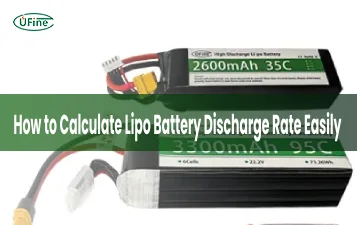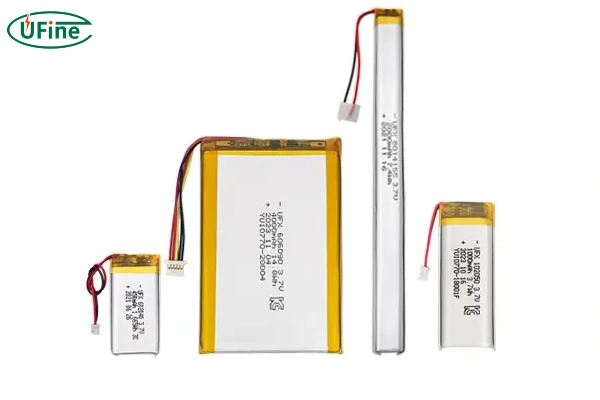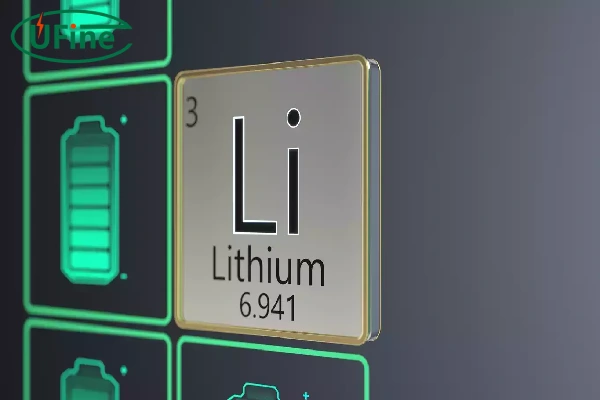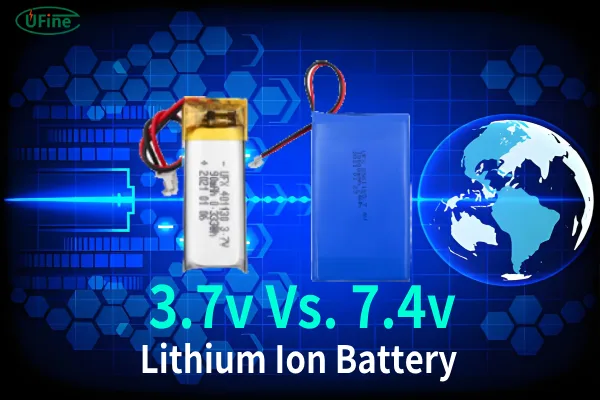Lithium-ion batteries have become integral to our everyday lives, powering everything from smartphones to electric vehicles. However, not all lithium-ion batteries are created equal. One common point of confusion is the difference between 3.7V and 7.4V Li-ion batteries. In this article, we’ll delve into the specifics of these two types of batteries, exploring their characteristics, applications, and how they compare. By the end, you’ll clearly understand which battery might be best suited for your needs.
Part 1. Do all lithium batteries have the same voltage?
Lithium-ion batteries come in a variety of voltages.
The voltage of a lithium-ion battery is determined by the number of cells it contains and how these cells are configured. A single lithium-ion cell typically has a nominal voltage of 3.7V. However, when cells are connected in series, the voltages add up. For example, two 3.7V cells connected in series will produce a 7.4 v lithium battery . This variation in voltage allows for different applications, catering to the specific power requirements of various devices.
In addition to the standard voltage of 3.7v lithium battery is 3.7V. it may have other voltages related to their charging and discharging characteristics.
- Fully Charged Voltage: When fully charged, the voltage of a 3.7V lithium battery can be higher than the nominal voltage, typically around 4.2 volts per cell for lithium-ion batteries.
- Nominal Voltage Range: The nominal voltage range for 3.7V lithium batteries is typically between 3.0 volts (discharged state) and 4.2 volts (fully charged state).
- Operating Voltage: The operating voltage of a 3.7V lithium battery refers to the voltage range within which the battery can safely discharge without causing damage. This range is usually between 3.0 volts and 4.2 volts.
- Cut-off Voltage: The cut-off voltage is the minimum voltage at which a device or charger stops discharging or charging the battery to prevent over-discharging or overcharging. For 3.7V lithium batteries, the cut-off voltage is typically around 3.0 volts per cell.
These additional voltage levels are essential considerations for proper battery management, charging, and discharging.
Part 2. How to calculate the series voltage of a 3.7v lithium battery?
By multiplying the nominal voltage of each 3.7V lithium battery by the number of batteries connected in series, you can determine the total output voltage of the series-connected battery pack.
For example, if you are connecting three 3.7V lithium batteries in series, the calculation would be:
Total Voltage = 3.7V *3 = 11.1V
However, the voltage remains the same when connected in parallel. Just the battery capacity is increased.
Part 3. What factors affect li-Ion battery voltage?
Several factors can influence the voltage of a lithium-ion battery:
- Number of Cells: The more cells connected in series, the higher the voltage.
- State of Charge: A battery’s voltage changes with its charge level. A fully charged lithium-ion cell can have a voltage of up to 4.2V, while a fully discharged cell can drop to around 3.0V.
- Battery Age: Over time, the capacity and voltage of lithium-ion batteries can degrade due to repeated charging and discharging cycles.
- Temperature: Extreme temperatures can affect the battery’s voltage and overall performance. High temperatures can increase the voltage, while low temperatures can decrease it.
Part 4. Li-ion battery 3.7V vs 7.4V: what’s the difference?
1. Voltage
- 3.7V Battery: This is the nominal voltage of a single lithium-ion cell. It is the standard voltage for many small electronic devices.
- 7.4V Battery: This is the nominal voltage of two lithium-ion cells connected in series. This higher voltage is suitable for devices that require more power.
2. Capacity
- 3.7V Battery: Typically, a 3.7V battery has a lower capacity compared to a 7.4V battery because it consists of a single cell. However, it can still provide sufficient energy for small devices like smartphones and wearables.
- 7.4V Battery: Generally, a 7.4V battery has a higher capacity as it combines two cells. This means it can store more energy, making it suitable for larger devices like laptops and drones.
3. Size
- 3.7V Battery: Due to its single-cell configuration, a 3.7V battery is smaller and lighter. This compact size makes it ideal for portable devices where space is limited.
- 7.4V Battery: A 7.4V battery is larger and heavier because it contains two cells. This added size and weight are necessary for applications that demand more power.
4. Price
- 3.7V Battery: Generally, 3.7V batteries are cheaper due to the use of fewer cells and materials. They are cost-effective solutions for small electronics.
- 7.4V Battery: These batteries are more expensive because they contain more cells and materials and often require more complex battery management systems (BMS) to ensure safe operation.
5. Application
- 3.7V Battery: These batteries are commonly used in small electronic devices like smartphones, fitness trackers, and other wearables where low power consumption is key.
- 7.4V Battery: These batteries are used in applications that require more power, such as laptops, RC vehicles, drones, and some medical devices. Their higher voltage and capacity make them suitable for more demanding tasks.
Part 5. How to pack a 3.7V lithium-ion battery into 7.4V?
Creating a 7.4 v lithium battery from two 3.7V cells involves connecting the cells in series.
Here’s how you can do it:
- Connect in Series: Take two 3.7V cells. Connect the positive terminal of the first cell to the negative terminal of the second cell. This series connection adds the voltages of the cells together, resulting in a combined voltage of 7.4V.
- Use Proper Connectors: Ensure you use appropriate connectors and soldering techniques to create a secure and reliable connection between the cells.
- Add a Battery Management System (BMS): A BMS is crucial for monitoring the voltage, current, and temperature of each cell. It helps to balance the charge between the cells and protects against overcharging, over-discharging, and short circuits.
- Encase the Battery Pack: Once connected and equipped with a BMS, the battery pack should be encased in a durable, non-conductive material to protect it from physical damage and environmental factors.
- Testing: After assembling the battery pack, thoroughly test it to ensure it meets the desired performance and safety standards.
Part 6. Can I use a 7.4V charger to charge a 3.7V battery?
No, you should not.
A 7.4V charger is designed for higher voltage and can overcharge a 3.7V battery, potentially causing damage or even a fire.
Part 7. Can I use a 3.7V li-ion battery instead of a 7.4V lithium battery?
You cannot directly substitute a 3.7V battery for a 7.4V battery.
The voltage difference would result in insufficient power for devices designed for 7.4V. It could also damage the device. Always use the correct voltage battery specified by the manufacturer.
Part 8. Choosing the right battery for your needs
When deciding between a 3.7V and a 7.4 v lithium battery , consider the following factors:
- Application: Identify the power requirements of your device. Small electronics like smartphones typically use 3.7V batteries, while larger devices like laptops and drones require a higher capacity of 7.4V lithium batteries.
- Size and Weight Constraints: Evaluate the space available for the battery in your device. If space is limited, a 3.7V battery might be more suitable.
- Cost: Consider your budget. If cost is a significant factor, a 3.7V battery might be a more economical choice.
- Performance Needs: Assess the performance needs of your device. If you need higher power output and longer battery life, a 7.4 v lithium battery may be the better option.
- Safety and Reliability: Ensure that whichever battery you choose includes proper safety mechanisms such as a BMS to protect against potential hazards.
Part 9. Conclusion
Understanding the differences between 3.7V and 7.4V lithium-ion batteries is crucial for selecting the right power source for your needs. While 3.7V batteries are compact, cost-effective, and ideal for small devices, 7.4V lithium batteries offer higher capacity and power output, suitable for more demanding applications. By considering factors such as application, size, cost, performance, and safety, you can make an informed decision that ensures optimal performance and longevity for your devices.
Related Tags:
More Articles

LiPo Battery Discharge Rate Guide & Calculation Tips
Understand LiPo battery discharge rates, C-ratings, and how to calculate max current. Essential guide for RC, drones, and electronics users.
High‑Capacity 3S LiPo Batteries: 5000 mAh vs. 10000 mAh
Compare 3S LiPo 5000mAh vs 10000mAh batteries by weight, power, and use. Find the best fit for your drone, RC car, or boat setup.
Top 5 Applications for Small 3S LiPo Batteries
Small 3S LiPo batteries power drones, RC gear, wearables, and robotics with high energy and low weight. Making them ideal for compact electronics projects.
Building and Charging Your Own 3S LiPo Pack: A Step‑by‑Step Guide
Learn how to build, balance, and charge a 3S LiPo battery pack safely at home with this complete DIY guide for hobbyists and beginners.
How to Choose the Right LiPo Battery Plug Type?
Discover the best LiPo battery plug types, how to choose them, and expert tips for safe usage, soldering, and maintenance.






